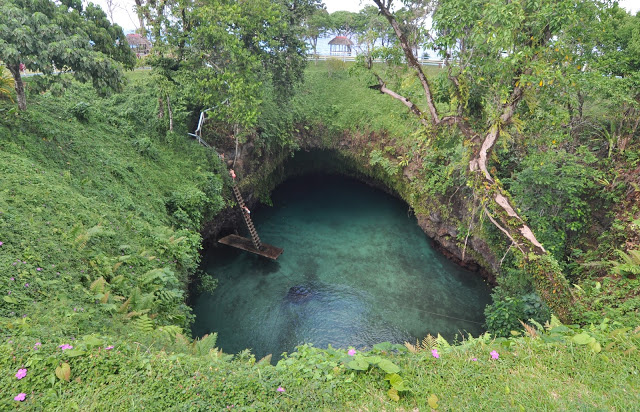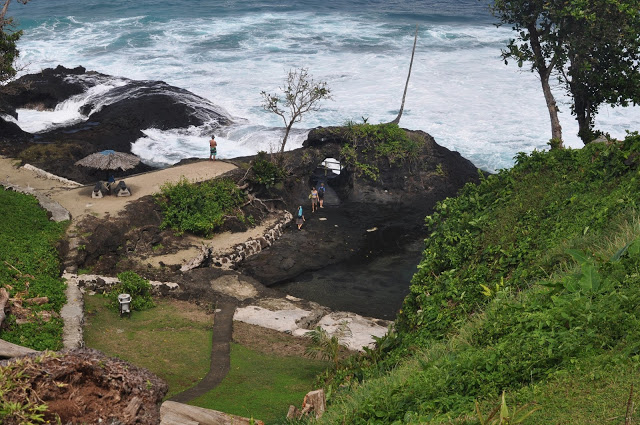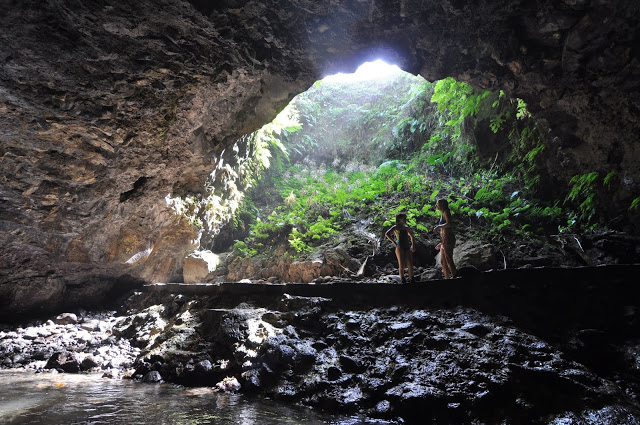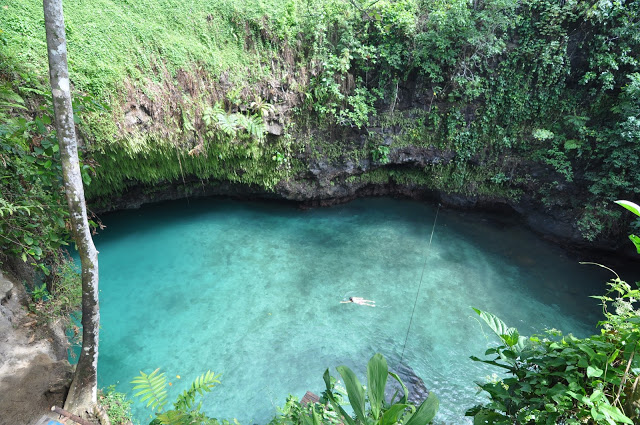
We’ve been singing the praises of American Samoa since we first arrived there a year ago and found a place and people who contradicted everything we’ve heard about, “the Americanized cesspool of the South Pacific.” We loved the place. We still do. We returned again on our way to Fiji.
When we first arrived in Apia, the big city in the other Samoa, we described the country to our friends as, “More American than American Samoa.” There was a McDonalds in Apia too, and a larger population; a snazzy marina with new docks made in Bellingham, Washington, and fringed with nightclubs; a bunch of tourists and the taxis to serve them; and prohibitions against anchoring and other restrictive rules.
We didn’t stay long in Samoa, but we didn’t leave before we got past our first impressions and came to appreciate the place more. We met people and we got a couple hours out of town, by car.

Samoans (formerly Western Samoans) and American Samoans are a common people divided only by a political border. From my lay perspective, it seemed to me that American Samoans had not abandoned elements of their culture for their American identity. They still speak Samoan, they still live on communal lands under the jurisdiction of a chief, they still wear lava-lavas, they still bury their relatives in a crypt in front of their homes. All true, but in Samoa we saw a contrast in culture and identity that allowed us to appreciate the differences.
Driving outside the city of Apia, we were struck by the care and attention paid to landscaping outside of modest homes. (I’m describing a structure built hastily of scrap wood and sheet metal with the knowledge that it will need to be rebuilt after the next hurricane. Doors and windows do not warrant their expense.) Many of these properties are surrounded by landscaping that was designed and maintained with exquisite care. There is a cultural impetus behind this that we learned about in American Samoa, but which I strained to see evidence of there. Apparently, although all property is communal, the appearance of the landscaping in front of a man’s home is a strong reflection of his character and status. This was obvious and dramatic in Samoa.

Another Samoan (and South Pacific) cultural aspect is the fale, a domed, pillared structure without walls that is iconic. People call them sleeping rooms and meeting places. They are all over American Samoa, in all shapes and sizes near people’s homes and not apparently used often. They appeared to me as empty monuments to tradition, perhaps widely used before TV and AC.
In Samoa, the fales were just as prevalent, and appeared to be in daily use. Woven mats of pandanus leaves covered floors on which children played and women worked. Cots and bedding were neatly arranged in many.

That’s all, just small observations between the two Samoas. I absolutely felt a kinship in American Samoa; perhaps that was the allure to a traveler who has been out of country for so long. And every single American Samoan we’ve met has been friendly. But they are indeed more like us than their more numerous brothers and sisters, just 80 miles away—but not so many worlds apart.








